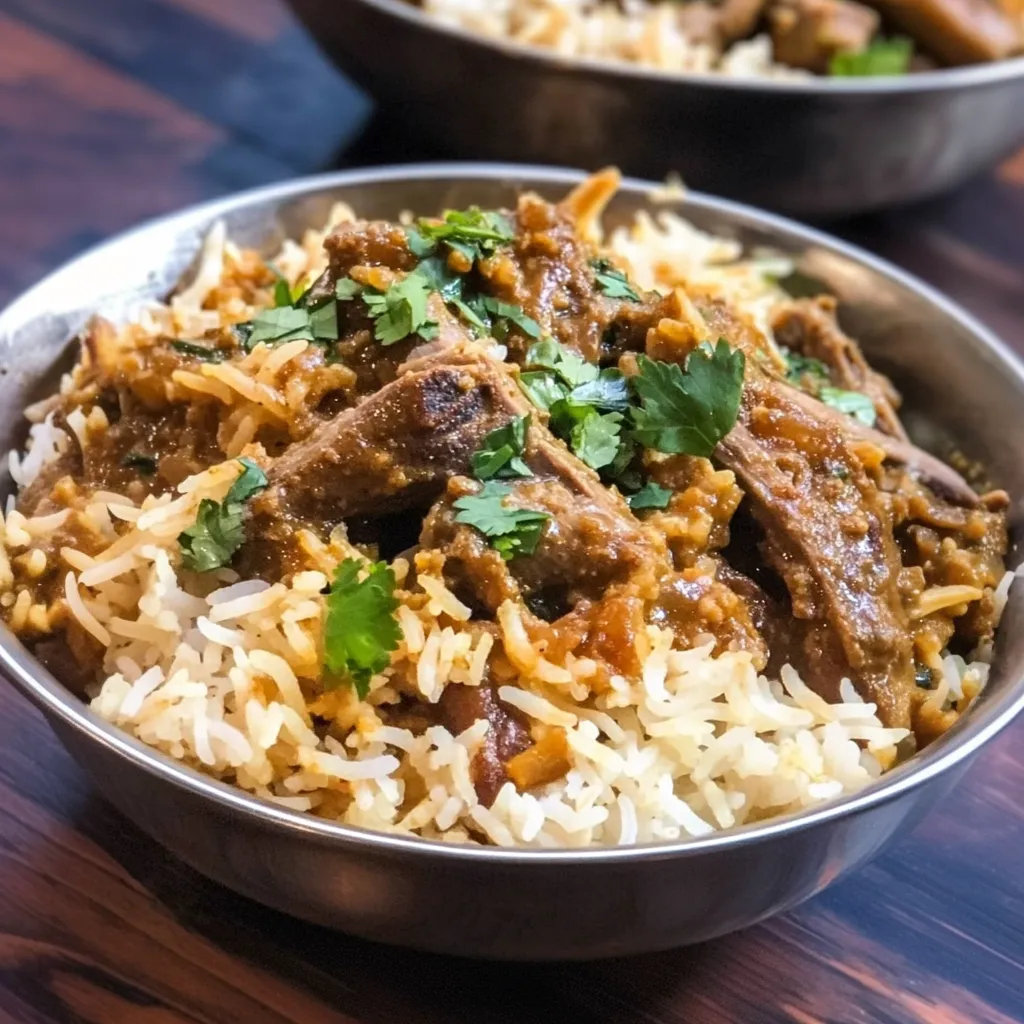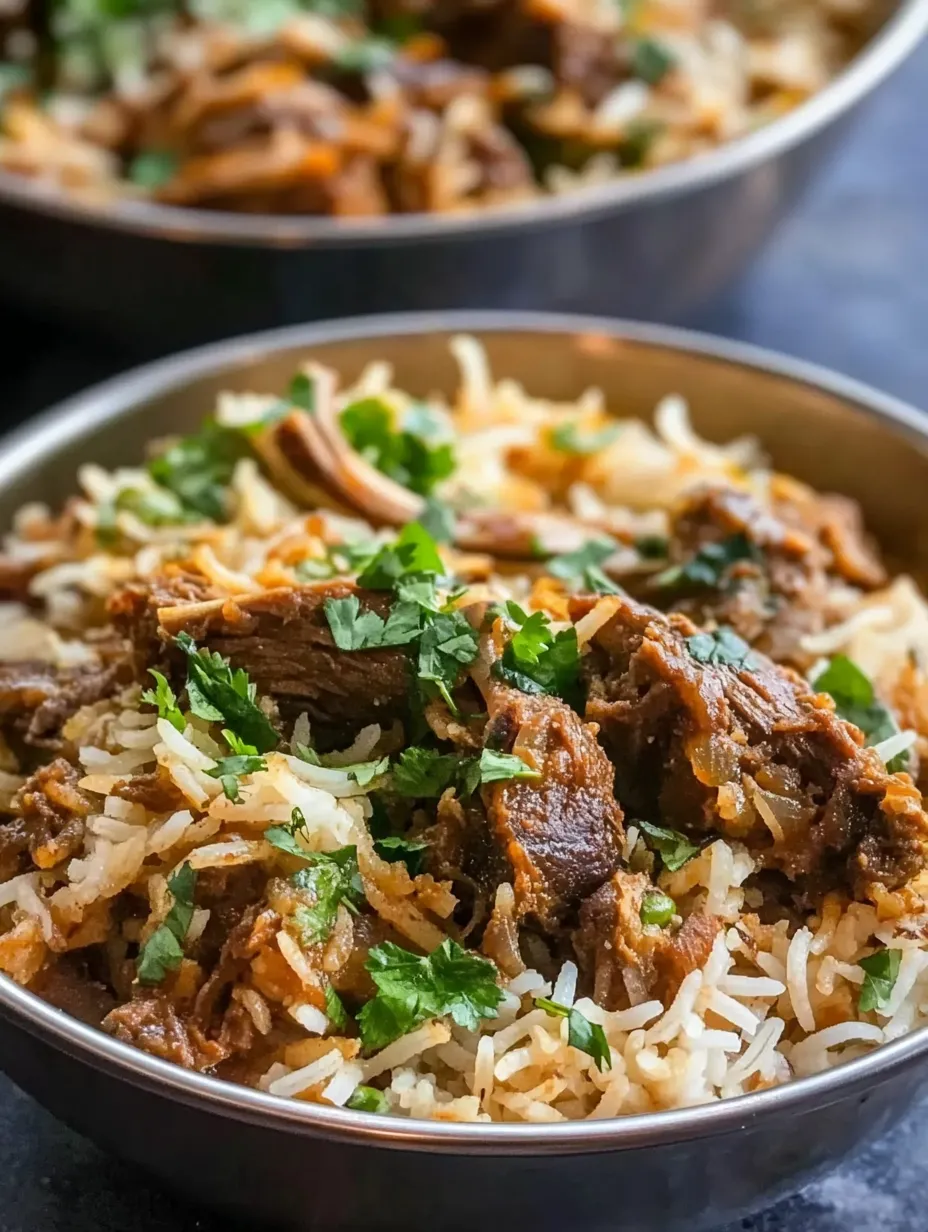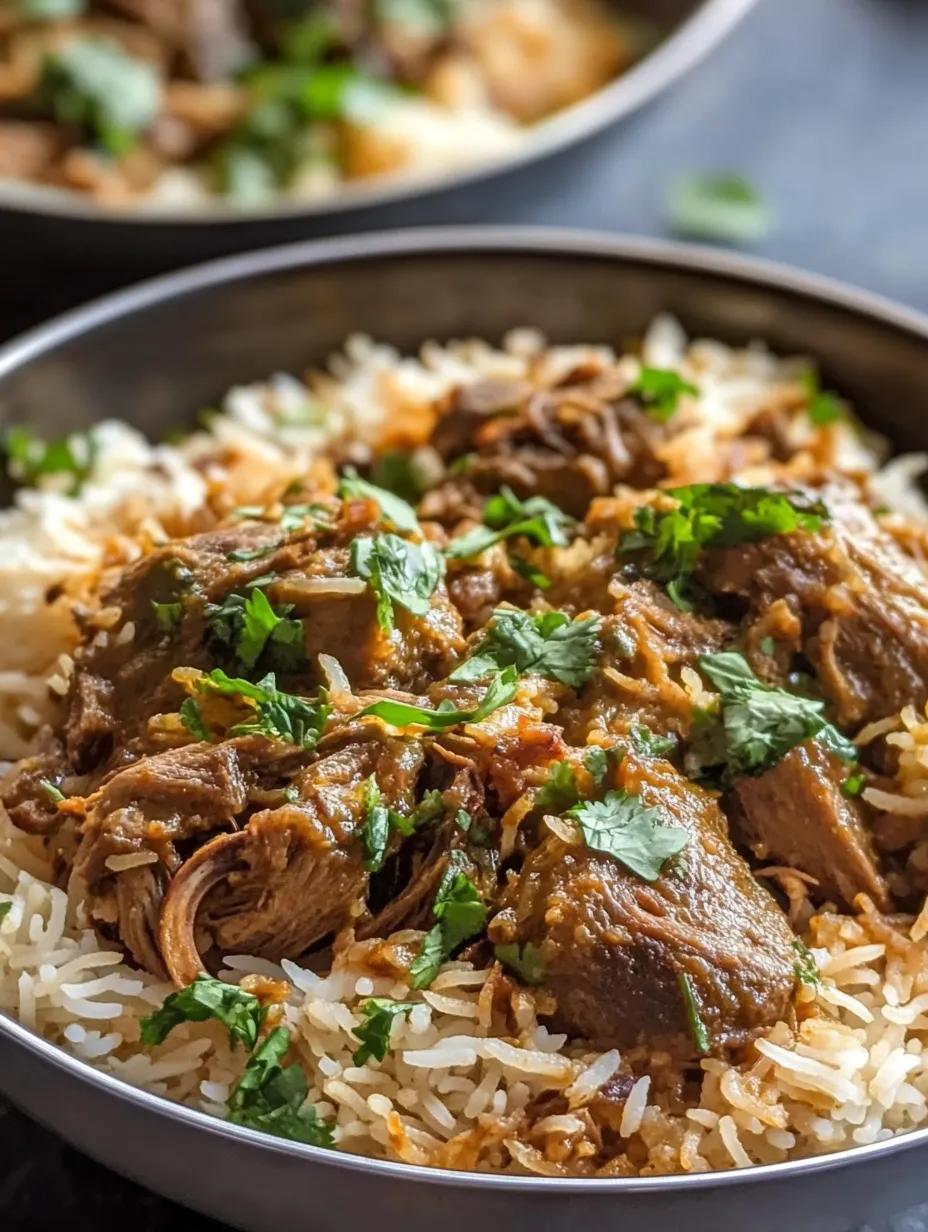 Pin it
Pin it
This traditional mutton biryani brings together fragrant basmati rice and tender mutton in layers of aromatic spices. It's the centerpiece of my family gatherings and has become my signature dish for special occasions where the rich flavors never fail to impress guests.
I first learned this recipe from my grandmother during Eid celebrations. The way her eyes lit up when teaching me the proper layering technique showed me that biryani is more than food it's a tradition passed through generations.
Ingredients
For Basmati Rice
- Basmati rice: 250g carefully select aged long grain variety for best texture and aroma
- Salt: 1 tbsp kosher salt works best for even seasoning
- Water: 1L filtered water ensures clean flavor
- Bay leaves: 2 fresh ones provide superior aroma
- Cinnamon stick: 1 small look for Ceylon cinnamon for subtle sweetness
- Cloves: 4 whole for warm punctuated flavor
- Green cardamoms: 3 crush slightly before adding to release oils
- Black cardamom: 1 adds smoky depth that makes this biryani special
- Black peppercorns: 8 use freshly cracked for maximum flavor
- Garlic paste: ¼ tbsp freshly made paste has brighter flavor
- Ginger paste: ¼ tbsp young ginger root works best for less fibrous paste
For Mutton Curry
- Mutton leg: 600g ask your butcher for meat from a young animal for tenderness
- Fried shallot: ¼ cup make extra as you'll need more for assembly
- Yogurt: 120g full fat yogurt provides richness and tenderizes the meat
- Coriander & mint leaves: ¼ cup chopped use equal portions of both herbs
- Biryani masala: 1½ tbsp toasted spice blend ensures authentic flavor
- Dried plum: 1 adds subtle sweetness to balance the savory elements
- Bay leaves: 2 essential for authentic aroma
- Red tomato: 1 small vine ripened for best flavor
- Black peppercorn: 8 freshly ground for maximum flavor impact
- Paprika powder: ½ tbsp use sweet Hungarian variety for best color and flavor
- Green cardamom: 3 gently crush before using
- Black cardamom: 1 this smoky spice is crucial for authentic flavor
- Ginger paste: ¼ tbsp freshly made for brightest flavor
- Garlic paste: ¼ tbsp use fresh garlic for best results
- Salt: to taste
- Water: ½ cup
For Assembly
- Ghee: 2 tbsp clarified butter adds rich nutty flavor
- Fried Shallot: ½ cup adds textural contrast and onion sweetness
- Coriander & mint leaves: ¼ cup chopped adds fresh herbal notes
Step by Step Instructions
- Prepare the Rice:
- Soak basmati rice in lukewarm water for 30 minutes. This crucial step removes excess starch allowing each grain to remain separate. The water should be just warm to the touch not hot or the rice may cook unevenly.
- Cook the Rice:
- Combine water with all basmati rice spices and bring to a rolling boil. Add the drained rice and cook for exactly 12 minutes on high heat. The rice should be about 80% cooked firm in the center but soft on the outside what we call the "al dente" stage for biryani rice.
- Drain the Rice:
- Turn off the heat and immediately drain the rice in a colander. Do not rinse the rice as you want to preserve the fragrant spices. Spread it on a tray if possible to prevent further cooking from residual heat.
- Prepare the Mutton:
- Combine mutton leg with all curry ingredients in a pressure cooker mixing thoroughly to ensure the meat is well coated with the yogurt and spices. Cook under pressure for 20 minutes until the meat is tender but not falling apart. The pressure cooking creates a rich concentrated flavor base.
- Layer the Biryani:
- Transfer the cooked mutton curry to a heavy bottomed pot with a tight fitting lid. Carefully spoon the partially cooked rice over the curry in an even layer being extremely gentle to avoid breaking the grains. Each grain should remain distinct this is the hallmark of excellent biryani.
- Add Finishing Touches:
- Drizzle half the ghee over the rice layer then sprinkle half the fried shallots and chopped herbs. Add another layer of rice and repeat with remaining ghee shallots and herbs. These layers create the distinctive flavor and appearance of authentic biryani.
- Dum Cooking:
- Cover the pot with a tight fitting lid. Traditional cooks seal the lid with dough but heavy foil works well too. Cook on very low heat for 10 minutes allowing the flavors to meld and the rice to finish cooking through steam. This gentle steam cooking called "dum" is essential for authentic texture.
- Serve the Biryani:
- After 10 minutes remove from heat and let rest for 5 minutes. Uncover and gently transfer to a serving dish ensuring you scoop from bottom to top to get both meat and rice in each portion. The layers should be visible showing the distinct components.
 Pin it
Pin it
My grandmother always said the soul of biryani is in patient cooking. When I visited her in Delhi she would start preparing biryani in the morning for our evening meal letting flavors develop slowly. This patience is what separates good biryani from truly exceptional biryani.
Rice Selection Matters
Biryani excellence starts with proper rice selection. Look for aged basmati rice which has lower moisture content resulting in fluffier grains with more distinct aromas. The grains should be long and slender with a slightly yellowish or ivory tint rather than bright white. Premium quality aged rice will expand more during cooking and remain separate rather than clumping together. I personally keep a special container of aged basmati just for biryani separate from my everyday rice.
 Pin it
Pin it
Serving Traditions
In traditional Indian homes biryani is served in the center of the table for everyone to share directly from the main dish. Accompany your biryani with raita a cooling yogurt side dish with cucumber and mint or a simple kachumber salad made with diced cucumber tomatoes and onions with a squeeze of lemon juice. A side of papadum crackers provides textural contrast while chutney adds brightness. For formal gatherings serve individual portions making sure each plate gets both the aromatic rice and tender mutton pieces.
Storing and Reheating
Biryani actually improves overnight as flavors meld making it perfect for preparing ahead for gatherings. Store leftovers in an airtight container in the refrigerator for up to three days. When reheating avoid the microwave which can make the rice gummy. Instead place in an oven safe dish sprinkle with a tablespoon of water cover with foil and warm in a 325°F oven for about 15 minutes. You can also freeze biryani for up to two months in freezer safe containers thawing overnight in the refrigerator before reheating.
The Cultural Significance
Biryani holds deep cultural significance across the Indian subcontinent. This particular style reflects the Mughal influence with its layering technique and use of dried fruits with meat. Different regions of India have their own variations from the spicy Hyderabadi style to the more delicate Lucknowi approach. The dish traditionally signifies celebration and is commonly prepared for weddings religious festivals and important gatherings. When I serve this biryani I'm not just sharing food but connecting my guests to centuries of culinary tradition.
Frequently Asked Questions
- → What makes mutton biryani so flavorful?
The combination of slow-cooked mutton, fragrant basmati rice, and whole Indian spices like cardamom, cinnamon, and cloves create layers of complex, rich flavors.
- → How can I ensure my rice doesn’t break during layering?
Handle the cooked basmati rice gently and layer it carefully over the mutton curry with a ladle to prevent breaking.
- → What type of mutton is ideal for this dish?
Mutton leg or shoulder is ideal, as they are tender when slow-cooked and absorb the spices well.
- → Can I use store-bought biryani masala?
Yes! Store-bought biryani masala works well in this dish, but adjust the seasoning to suit your taste preferences.
- → Why is fried shallot important in this recipe?
Fried shallots add a sweet, crispy texture and depth of flavor, balancing the bold spices and richness of the dish.
